A letter from Pensacola
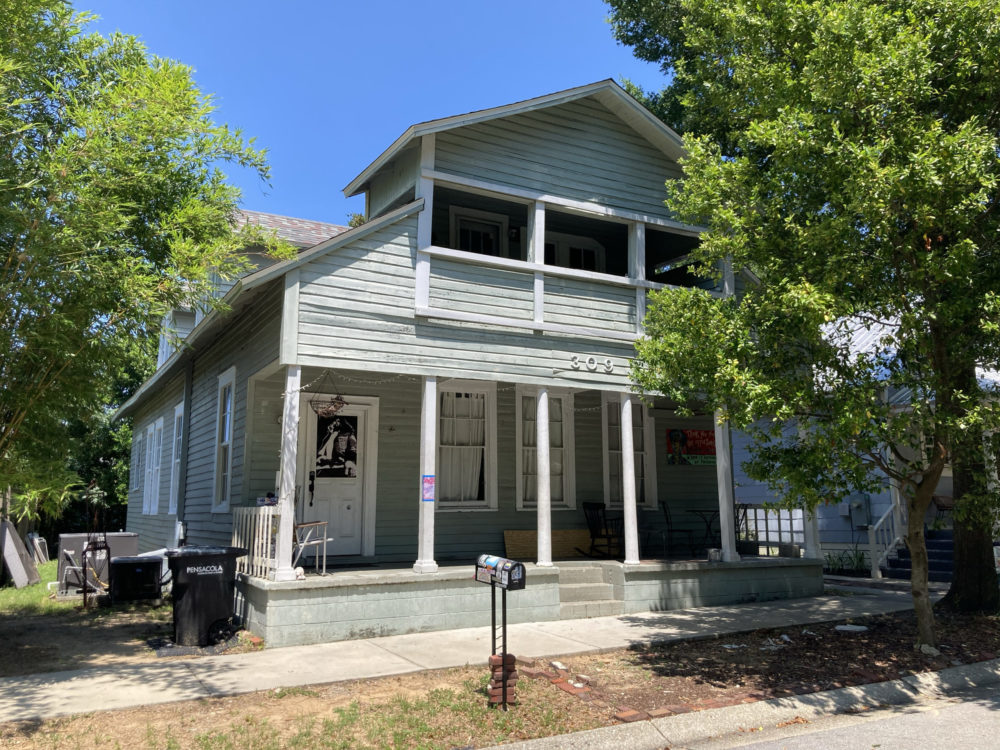
S Mark Gubb finds Welsh princes, wrestlers, soldiers and vegetarians under the Florida sun
Throughout July I am artist in residency at The 309 Punk Project in Pensacola, Florida.
For those that don’t know, an artist’s residency is when an organisation invites an artist to reside with them for a period and make new work whilst they’re there, often informed by their experience of being somewhere new.
As the name suggests, the 309 has grown out of the punk music scene of the city and is based in a beautiful old, reassuringly dilapidated, clapboard wooden house.
The 309 has been a punkhouse for the past 30 years – something akin to a squat in the UK – and has been a central point in Pensacola’s punk music scene and radical politics across that time, with a revolving door of musicians, artists, activists, and people who’ve just jumped off the trains that run slowly past the bottom of the street.
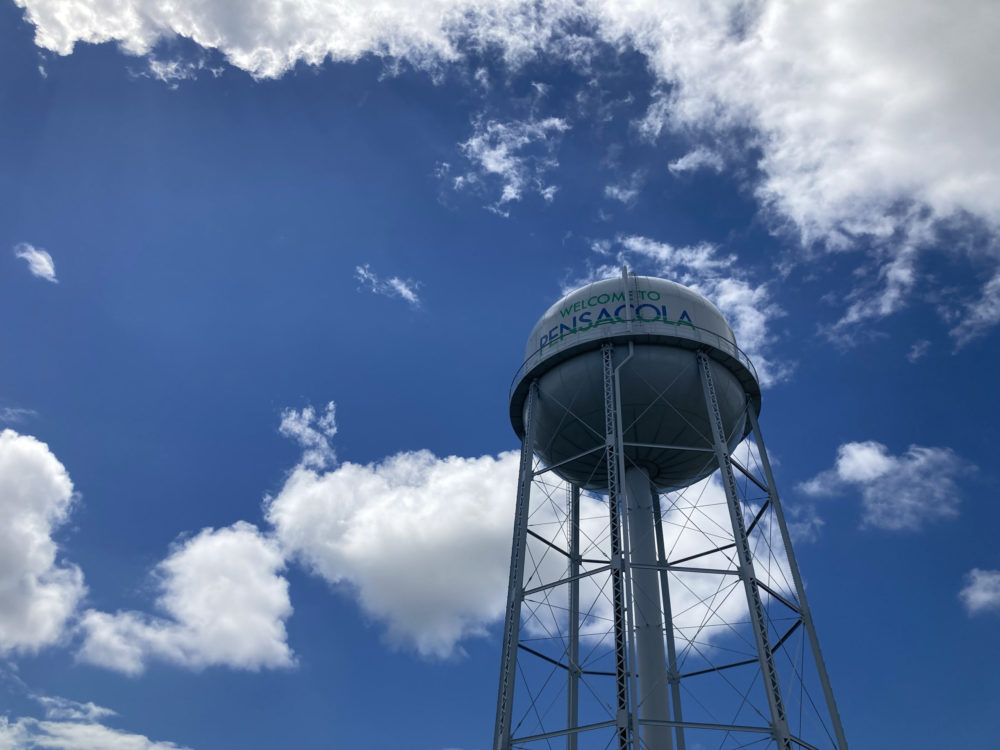
Welsh connections
I’ve come here to explore a series of slightly disparate Welsh connections to the city.
At one end of the scale it’s alleged that, in 1170, Prince Madoc landed just across the border in Alabama; for many years, Gulf Breeze, a district of the city, was home to the Exotic Adrian Street – a Brynmawr resident, turned world-famous Glam Rock wrestler; in 1781, The Prince of Wales redoubt was a fort used by the British in the Siege of Pensacola (they lost); and one half of the team behind Strega Nona’s – the city’s first organic, primarily vegetarian, restaurant – was Anne Jones, neé Pugh, a Welsh immigrant who moved here after falling in love with local poet, Jamey Jones, when he lived for a time in Three Cliffs Bay.
This random series of connections was enough to bring me here, where I’m spending my time digging around further, with the intention of writing and recording an EP of punk tunes about these things with local musicians.
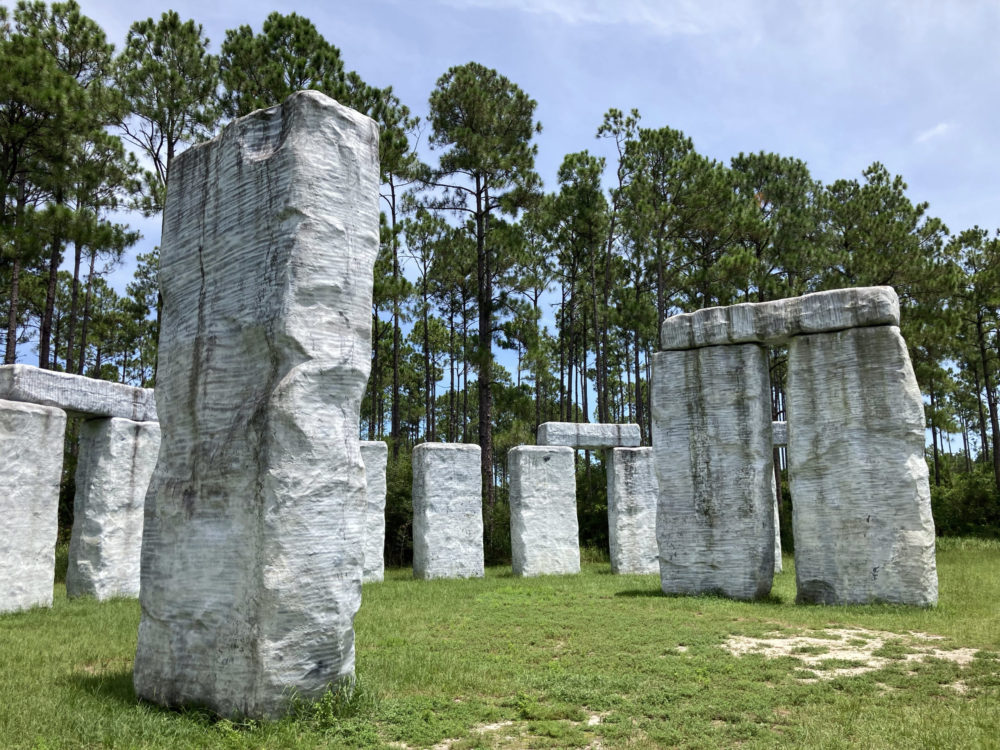
Unsurprisingly, there are also connections within the connections. There are echoes of Gruff Rhys’ 2014 album and film, ‘American Interior’ in my research, where he followed the trail of his distant relative, John Evans, who in 1795 had gone searching for a Welsh-speaking First Nations people who purportedly existed as a byproduct of Madoc’s landing.
Where Gruff went in search of the legacy, I’ve been looking at the origin-story. This took me on a daytrip to Fort Morgan with my 309 hosts, about an hour-and-a-half west of Pensacola, on a spit of land at the mouth of Mobile Bay.
On the way we stopped at Bamahenge – a full-scale fibreglass rendering of Stonehenge just off the highway in a clearing of trees. Why is it there? Nobody really knows. It’s just one of those beautifully random US roadside attractions that exists for existence’s sake.
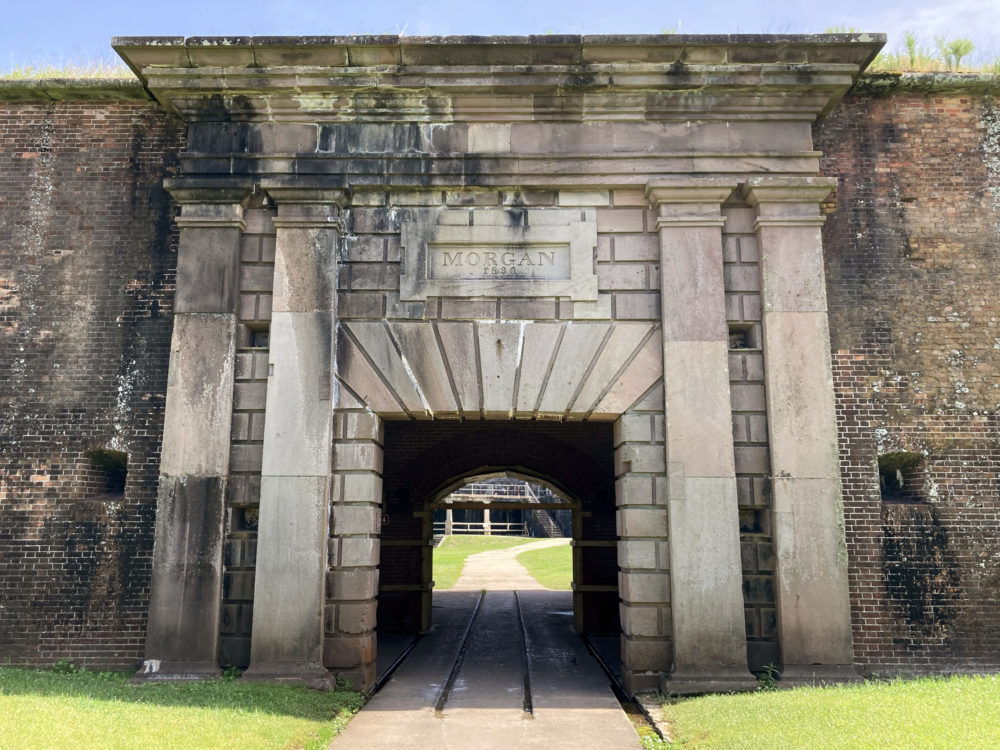
In 1953, at Fort Morgan, the Daughters of the American Revolution erected a plaque to commemorate it as the spot most likely to have been the site of Madoc’s landing.
“In memory of Price Madoc, a Welsh explorer who landed on the shores of Mobile Bay in 1170 and left behind, with the Indians, the Welsh language.”
Legitimacy
The plaque has since been removed – initially damaged in a storm, then never restored by a park service somewhat questioning of the story’s legitimacy. That plaque now resides in the DAR headquarters in Mobile and there is no longer any reference to Madoc or his landing anywhere on the site, not even in the small museum.
The lady selling tickets at the gates had never heard of Madoc, whereas the man working the museum desk had heard the story but was having none of it. These pesky historians and their desire for evidence.
As the name Fort Morgan suggests, there are further Welsh connections. It’s named after a Revolutionary soldier, General Daniel Morgan, whose grandparents emigrated from Wales to Pennsylvania in the early 1700s.
Though, as with most colonial projects, any pride is tempered by the history, such as the fort’s role in the removal of the indigenous Muscogee people from the area.
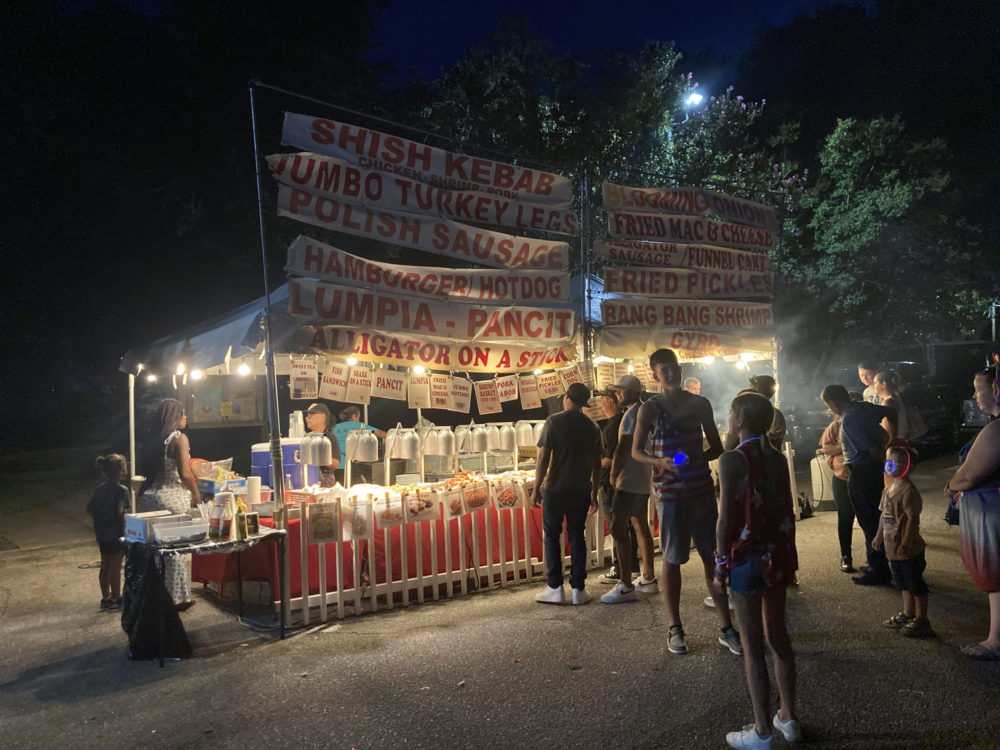
Far west
I was told before I arrived that Pensacola is so far west in the state that, culturally-speaking, they have more in common with Alabama than the Mickey-Mouse-Miami-Vice version of Florida we tend to think of.
A small city in American terms, the historic and walkable downtown is littered with colonial history and architecture. Pensacola is known as ‘America’s First Settlement’, as in 1559 Don Tristan de Luna established the first European (Spanish) colonial settlement here (local history also choosing to ignore Madoc’s nearby arrival some 400 years earlier…) and has variously seen Spanish, British, French, Confederate, and US flags flying over the city.
It feels too obvious to mention the heat, but… every day this month is in the 30s, with high humidity, and occasional torrential downpours momentarily clearing the air.
In the true spirit of punkhouses, the 309 regularly hold live shows, talks, and events in their spacious hallway, and last weekend I got to feed a group of interested visitors Bara Brith and talk to them about Cymru, devolution, independence, yr iaith, coal, and music.
I got to tell them how my Dad went to school with Howard Marks (whilst referencing the Super Furry Animals, ‘Fuzzy Logic’) and how I’d designed the album cover for James Dean Bradfield’s solo album, ‘Even in Exile’, about the Chilean musician and activist Victor Jara, finally rounding out the afternoon with a screening of the wonderful ‘Pride’.
There wasn’t a dry eye in the house – thanks to the power of the film, not my random selection of personal anecdotes.
We’ll see where my research and project eventually lead but, as it stands, at least part of it will be a live reading, over music I’ve written, of a section of Robert Southey’s epic 1807 poem, ‘Madoc’; the section imagining what Madoc’s journey from Colwyn Bay to Mobile Bay might have been like. Somewhat less comfortable than my own I imagine, and I doubt he would have had to change in Dallas.
https://www.309punkproject.org/
Mark’s trip to Pensacola has been funded by an International Opportunities grant from Wales Arts International.
Support our Nation today
For the price of a cup of coffee a month you can help us create an independent, not-for-profit, national news service for the people of Wales, by the people of Wales.





I imagine many out of the 2,775 British naval and royal air force aviators who learned to fly there during the second world war were from Cymru…